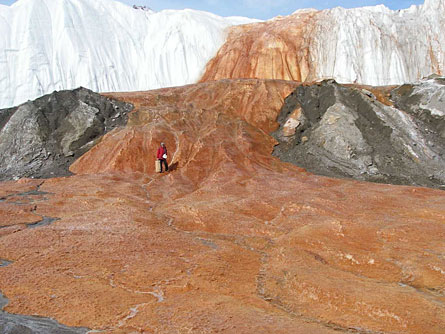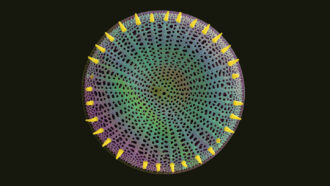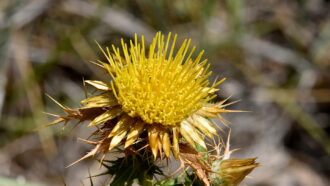Life trapped under a glacier
At Antarctica’s Blood Falls, scientists study microbes living in a dark and salty home
 |
|
Iron in water seeping from an underground ecosystem takes on a rusty color as it is exposed to air. Surprisingly hearty life forms use iron and sulfates, instead of oxygen, to live in their long-isolated, dark and salty home. |
| B. Urmston |
Ever heard of Blood Falls? It’s freezing cold, far away and hard to reach — probably not where you’re headed on your family vacation this summer.
Blood Falls is at the tip of a giant glacier in Antarctica. As its name suggests, the icy face of Blood Falls is red — but not from blood. Instead the water gets its hue because it’s rich in iron. When the water trickles out from its underground beginnings, the iron is exposed to oxygen in the air and quickly forms the red rust.
It may not be a tourist hot spot, but Blood Falls is very interesting to scientists who study living creatures. A geomicrobiologist — someone who studies how tiny organisms affect or use minerals — recently studied the rusty water and came up with some surprising results.
The water that feeds Blood Falls probably comes from a salty underground lake. It’s home to microbes that surprisingly don’t need oxygen to survive. Microbes are tiny organisms, usually invisible to the naked eye. The microbes found in Blood Falls are similar to other microbes that live in the ocean.
“This briny pond is a unique sort of time capsule,” says Jill Mikucki, the Dartmouth University geomicrobiologist who led the study of the water seeping from Blood Falls. “I don’t know of any other environment quite like this on earth.”
When she and her team studied the water, they found no oxygen but lots of dissolved iron. They suspect that the underwater reservoir formed when a giant glacier, now 1,300 feet thick, moved over the salty lake at least 1.5 million years ago. This trapped the water and everything in it in an oxygen-free, or anoxic, environment.
Unlike human beings and most other forms of life, the microbes from Blood Falls don’t need oxygen to live. Instead, they are able to exist using the iron and sulfates, chemical salts also found in the water. The microbes transfer particles called electrons from the sulfates to the iron.
The microbes at Blood Falls show that life can exist in even the harshest environments. In addition to giving us more information about our own planet, the study of these “extremophiles” may be useful in other scientific areas — like the search for life on other planets! If scientists find organisms on Earth that live on sulfur and iron, instead of oxygen, researchers might gain a better idea of where to look for life elsewhere in the universe.
Power words: (Yahoo! Kids Dictionary and WordNet)
microbe: A tiny life form; a microorganism, especially a bacterium that causes disease.
iron: A silvery-white, magnetic, metallic element occurring abundantly in combined forms. Used in a wide range of important structural materials.
sulfate: A chemical compound made from sulfur.
anoxic: A severe lack of oxygen
Going Deeper:







